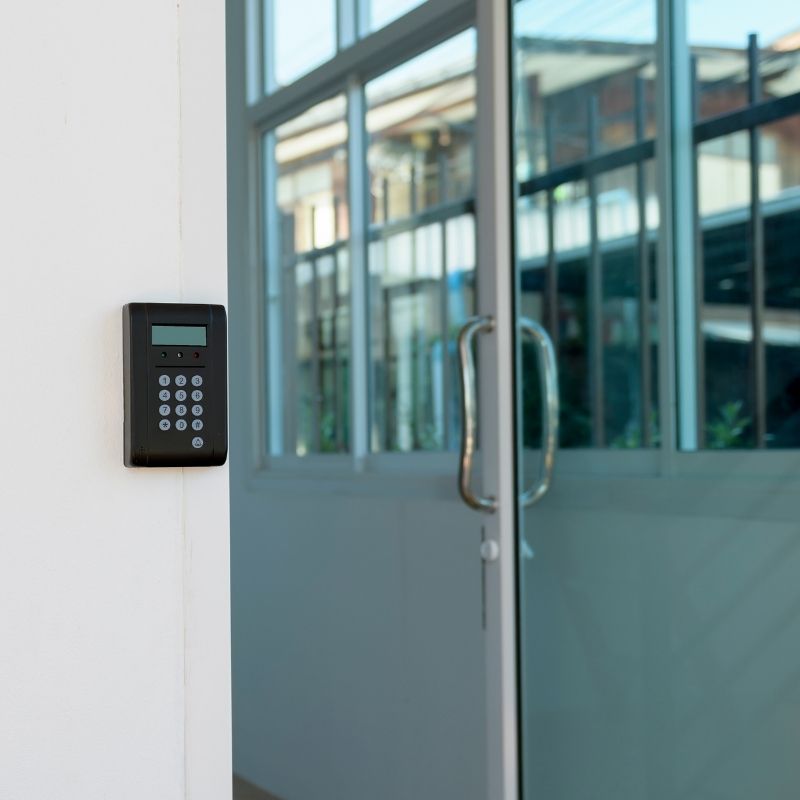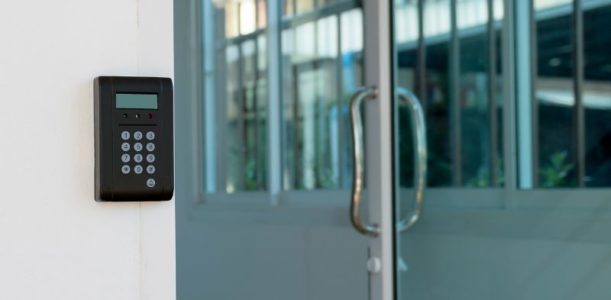
There are differences between these two types of access control systems, speaking with an experienced life safety and security system provider can help you decide which type of access control system is best for your business.
RFID Access Control Technology
RFID Access control systems consist of four elements, the RFID tag, the tag reader, the access control panel in the lock. RFID technology transmits data in one direction only, from the tag to the tag reader, and then to the access control panel which unlocks the door with the verifying credentials. RFID access control technology has been around for decades and is quite popular as it is fairly easy to implement and not overly expensive.
Some drawbacks of RFID technology are that these systems are prone to electromagnetic interference which can occur if multiple tags are in the same location or close proximity to magnetic devices. Additionally, an RFID system could be intentionally jammed which could disable the entire system. RFID tags can also be cloned with a transponder device because the unique data on an RFID tag never changes so the tag reader cannot differentiate between the original or a copy.
NFC Access Control Technology
NFC technology is an evolution above RFID systems as it is more fine-tuned and utilizes two-way communication, which is the biggest difference compared to RFID. NFC technology transmits data between devices with electromagnetic radio waves. While an NFC system may appear similar to RFID, as a user presents a tag to a tag reader and within seconds the door opens, the communication going back and forth between the tag and the tag reader is a very different process than RFID.
NFC technology generates encrypted codes for one-time use only, which is transferred from the tag to the tag reader. These codes are random and used only one time which makes them much more difficult if not impossible to clone. This significantly increases the level of security over RFID systems.
NFC technology is becoming more popular and slowly replacing RFID systems in many applications. Another major difference over RFID is the distance required to transmit data. RFID systems can generally scan a tag up to 100 m away without requiring a direct line of sight to the reader. NFC systems, on the other hand, do require a direct line of sight and actually require much closer contact, usually within a few centimeters to operate. This increases security levels in things like mobile payments, and high level security access systems.
HRSS Offers Fire, Life Safety and Security Services
To learn more about security integration and access control, contact your trusted fire alarm, life safety and security system provider. High Rise Security Systems, HRSS, is a leading provider of complete fire alarm, life safety and security services to a wide range of commercial properties in and around Chicago. Protecting properties and saving lives is our number one priority.
High Rise Security Systems is a leading fire life safety system provider offering consultation, complete system design, and comprehensive services including security integration. Contact us to learn more about improving your buildings safety and security from an experienced commercial safety system provider.



